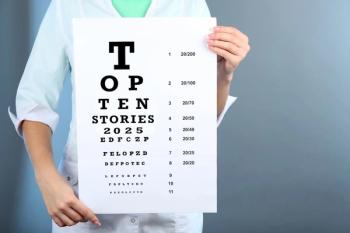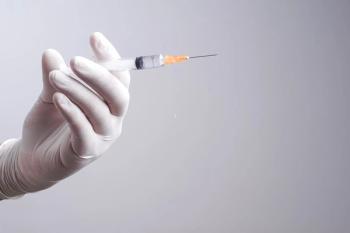
Q&A: PER-001 showed improved structure and visual function in patients with diabetic retinopathy
Key Takeaways
- PER-001, an endothelin-1 receptor antagonist, targets vasoconstriction, impacting ischemia, inflammation, and vascular leakage in diabetic retinopathy.
- The phase 2A study showed potential improvements in retinal sensitivity and low contrast visual acuity with PER-001, unlike the sham group.
An intravitreal implant shows promise in enhancing visual function and retinal structure in diabetic retinopathy patients, according to recent research.
Justis Ehlers, MD, FASRS, a retina surgeon at the Cole Eye Institute at the Cleveland Clinic presented, "PER-001, a long-acting endothelin antagonist intravitreal implant, improved structure and visual function in patients with diabetic retinopathy" at the American Society of Retina Specialists (ASRS) meeting. The ASRS annual scientific meeting took place from July 30 through August 2, 2025 in Long Beach, California.
Note: The following conversation has been lightly edited for clarity.
Ophthalmology Times: Can you share some of the data you presented on PER-001?
Justis Ehlers, MD, FASRS: I'm happy to share some of the data that was presented. What we were looking at in this study is PER-001 and what this is is a novel therapeutic that's an endothelin-1 receptor antagonist. This is a mechanism of action that's targeting blocking endothelin-1 , which is one of the most potent vasoconstrictors in the human body. We know that it has impact for things like ischemia, inflammation, vascular leakage, and there's been preliminary data that's shown that it may be effective in improving blood flow in glaucoma, as well as well as improving, actually, retinal function in glaucoma. So what we wanted to look at was how it could potentially affect diabetic retinopathy.
OT: What was the design of this study?
Ehlers: For this study, it was a phase 2A study, so it's relatively small, looking at 2 different doses for PER-001 compared to sham. It was a single dose study with 6 months of follow-up. There were multiple different endpoints that were of interest, both functional and structural. From a functional side, these are diabetic retinopathy patients who don't have diabetic macular edema. So many of them have relatively good central visual acuity, but they we know that early on in diabetic retinopathy, there can be impacts in things like low contrast, and so looking at, for example, low contrast visual acuity and sensitivity, we found that there was a clear trend in the sham group towards progressive worsening and in both dosing groups, potential improvements in retinal sensitivity as well as in low contrast visual acuity.
Additionally, we wanted to look at different structural outcomes, and this is where we looked at quantitative ultrawidefield angiography, looking at things like macular ischemia, macular leakage, and micro-aneurysms. Again, in both groups, we found trends and signals towards improvement in those parameters, where, in the sham group, trends towards worsening as well.
OT: How was PER-001 administered to the patients in this trial?
Ehlers: So with this implant, it's essentially been utilized on an extended release system, similar to what's been seen, for example, with the dexamethasone implant. The goal is, is that, because it's overall extended release platform, that this could be limited dosing, for example, every 6 months. You know, with this study, it was a single injection at 6 months. As we look for future studies that are being planned, for example, for the phase 2B/3 study understanding that duration and durability will be really important for this therapeutic.
Newsletter
Don’t miss out—get Ophthalmology Times updates on the latest clinical advancements and expert interviews, straight to your inbox.





